About Sports Injurues
- Home
- Patient Info
- Sports Injurues
Keeping active is fun and important for staying healthy, but if you play a sport or do any physical activity, it’s possible that you will get injured at some point. “Sports injuries” are injuries that happen when playing sports or exercising. Some are from accidents. Others can result from poor training practices or improper gear. Some people get injured when they are not in proper condition. Not warming up or stretching enough before you play or exercise can also lead to injuries.
Usually, common sports injuries are mild or moderate, there’s some damage, but everything is still in place. You can treat them at home using the PRICE therapy method. But you should expect that some common sports injuries may take months to heal, even with good treatment. If a sprain or strain is severe, however, the entire muscle, tendon, or ligament is torn away, and surgery may be needed. Treatment depends on the type and severity of the injury. Always see your doctor if pain persists after a couple of days. s following a sudden sideways or twisting movement of the foot. An ankle sprain can occur during athletic events or during everyday activities. An ankle sprain is an injury to the ligaments that support the ankle. The ligaments are structures that control excessive movement of the joint. When an ankle sprain happens, the ligament is stretched too far, and is either partially or completely torn. Common symptoms associated with an ankle sprain are pain with swelling and bruising. usually more significant swelling and bruising caused by bleeding under the skin. Patients usually have pain with walking, but can take a few steps. If you do have significant symptoms following a sprained ankle, you should seek medical attention.
Usually, common sports injuries are mild or moderate, there’s some damage, but everything is still in place. You can treat them at home using the PRICE therapy method. But you should expect that some common sports injuries may take months to heal, even with good treatment. If a sprain or strain is severe, however, the entire muscle, tendon, or ligament is torn away, and surgery may be needed. Treatment depends on the type and severity of the injury. Always see your doctor if pain persists after a couple of days. s following a sudden sideways or twisting movement of the foot. An ankle sprain can occur during athletic events or during everyday activities. An ankle sprain is an injury to the ligaments that support the ankle. The ligaments are structures that control excessive movement of the joint. When an ankle sprain happens, the ligament is stretched too far, and is either partially or completely torn. Common symptoms associated with an ankle sprain are pain with swelling and bruising. usually more significant swelling and bruising caused by bleeding under the skin. Patients usually have pain with walking, but can take a few steps. If you do have significant symptoms following a sprained ankle, you should seek medical attention.
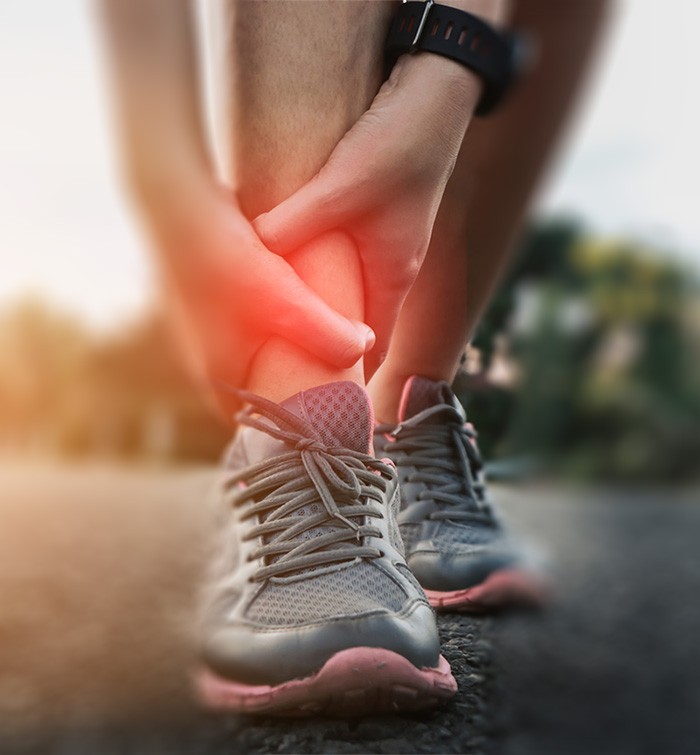

The most common sports injuries are:
- Ankle sprain
- Groin pull
- Hamstring strain
- Shin splints
- Knee injury: ACL tear
- Tennis elbow (epicondylitis)
- Knee injury: Patellofemoral syndrome — injury resulting from the repetitive movement of your kneecap against your thigh bone
- Shoulder problems (rotator cuff tears, recurrent dislocation)
- Shoulder problems (rotator cuff tears, recurrent dislocation)
Hence, it is not only the sports playing people who can get sports injuries, but anyone and everyone who does any sort of physical activity and exercise. It can include all age groups and people from all aspects of life. Though, most commonly injured people are:
- Wrestlers
- Kabbadi players
- Cricketers
- Hockey players
- Footballers
- Badminton
- Golfers
- Kho-Kho players
- Track & Field players
- Judo & Karate players
- Swimmers
- Tennis & Squash players
- Gym & Fitness centre users
The most common sports injuries are strains and sprains
Sprains are injuries to ligaments, the tough bands connecting bones in a joint. Suddenly stretching ligaments past their limits deforms or tears them. Strains are injuries to muscle fibers or tendons, which anchor muscles to bones. Strains are called “pulled muscles” for a reason: Over-stretching or overusing a muscle causes tears in the muscle fibers or tendons.
Think of ligaments and muscle-tendon units like springs. The tissue lengthens with stress and returns to its normal length unless it is pulled too far out of its normal range.
Think of ligaments and muscle-tendon units like springs. The tissue lengthens with stress and returns to its normal length unless it is pulled too far out of its normal range.
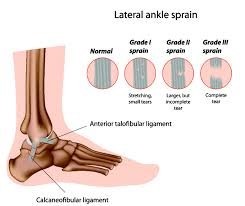

Preventing the most common sports injuries
Sometimes preventing common sports injuries is beyond our control, but many times sports injuries are preventable. Some injuries we bring on ourselves because we’re not conditioned for the activity. Work out daily and get double benefit to enjoy your weekend activities and garner the health benefits.
Every workout should start with a gentle warm-up to prevent common sports injuries. Getting warmed up increases blood flow to the muscles, gets you more flexible, and could decrease injuries.
Overuse injuries are common and preventable. Don’t come out and hit the ball for an hour after not playing for a while. Whether it’s hiking, running, or team sports, do some “pre-participation training” first by lightly working for the relevant muscle groups in the weeks before the activity. And learn to recognize when you’ve already left it all on the field. Stop when you are fatigued. Muscle fatigue takes away all your protective mechanisms and really increases your risk of all injuries. You can always come out to play again next weekend if you don’t get injured today.
Overuse injuries are common and preventable. Don’t come out and hit the ball for an hour after not playing for a while. Whether it’s hiking, running, or team sports, do some “pre-participation training” first by lightly working for the relevant muscle groups in the weeks before the activity. And learn to recognize when you’ve already left it all on the field. Stop when you are fatigued. Muscle fatigue takes away all your protective mechanisms and really increases your risk of all injuries. You can always come out to play again next weekend if you don’t get injured today.
Treating the most common sports injuries
Usually, common sports injuries are mild or moderate there’s some damage, but everything is still in place. You can treat them at home using the PRICE therapy method described later in this article. But you should expect that some common spor9ts injuries may take months to heal, even with good treatment. If a sprain or strain is severe, however, the entire muscle, tendon, or ligament is torn away, and surgery may be needed.
Here are some specific tips for treating each of the most common sports injuries:
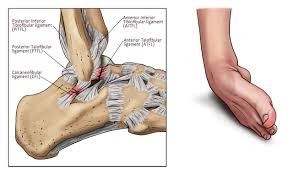

Ankle Sprain
What it is: Most athletes have experienced a sprained ankle, which typically occurs when the foot turns inward. This turning stretches or tears the ligaments on the outside of the ankle, which are relatively weak.
What you can do: With an ankle sprain, it’s important to exercise to prevent loss of flexibility and strength — and re-injury. You can ask your doctor or physical therapist to help you know what kinds of exercise you should do.
When to see a doctor: It’s important to note where the sprain has occurred. A ‘high ankle sprain’ is slower to heal and should probably be seen by a doctor to make sure the bones in the lower leg did not separate. One way to recognize a high ankle sprain is that this sprain usually causes tenderness above the ankle.
Groin pull
What it is: Pushing off in a side-to-side motion causes strain of the inner thigh muscles or groin. Hockey, soccer, football, and baseball are common sports with groin injuries.
What you can do: Compression, ice, and rest will heal most groin injuries. Returning to full activity too quickly can aggravate a groin pull or turn it into a long-term problem.
When to see a doctor: Any groin pull that has significant swelling should be seen early by a physician.
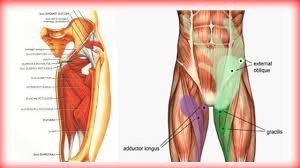

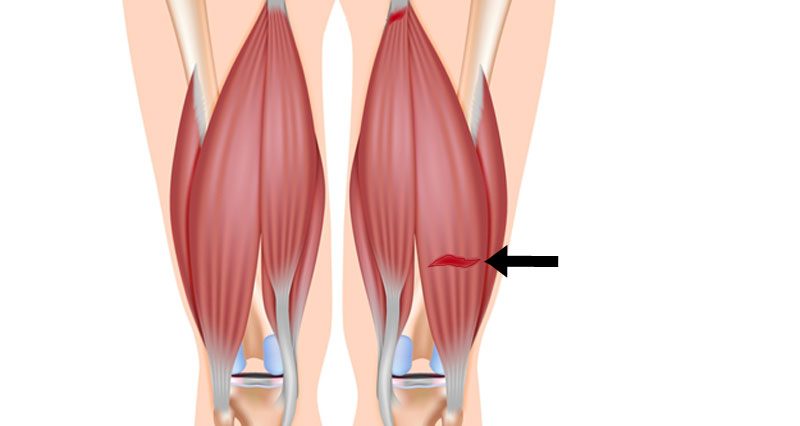

Hamstring strain
What it is: Three muscles in the back of the thigh from the hamstring. The hamstring can be over-stretched by movements such as hurdling — kicking the leg out sharply when running. Falling forward while waterskiing is another common cause of hamstring strains.
What you can do: Hamstring injuries are slow to heal because of the constant stress applied to the injured tissue from walking. Complete healing can take six to 12 months. Re-injuries are common because it’s hard for many guys to stay inactive for that long.
Shin Splints
What they are: Pains down the front of the lower legs are commonly called “shin splints.” They are most often brought on by running especially when starting a more strenuous training program like long runs on paved roads.
What you can do: Rest, ice, and over-the-counter pain medications are the mainstays of treatment.
When to see a doctor: The pain of shin splints is rarely an actual stress fracture — a small break in the shin bone. But you should see your doctor if the pain persists, even with rest. Stress fractures require prolonged rest, commonly a month or more to heal.
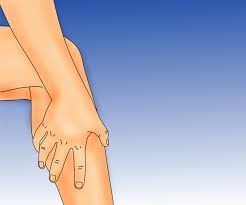

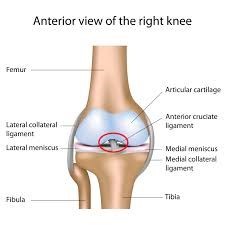

Knee injury: ACL tear
What it is: The anterior cruciate ligament (ACL) holds the leg bone to the knee. Sudden “cuts” or stops or getting hit from the side can strain or tear the ACL. A complete tear can make the dreaded “pop” sound.
When to see a doctor: Always, if you suspect an ACL injury. ACL tears are potentially the most severe of the common sports injuries. A completely torn ACL will usually require surgery in individuals who wish to remain physically active.
Knee injury: Patellofemoral syndrome
What it is: Patellofemoral syndrome can result from the repetitive movement of your kneecap (patella) against your thigh bone (femur), which can damage the tissue under the kneecap. Running, volleyball and basketball commonly set it off. One knee or both can be affected.
What you can do: Patience is key. Patellofemoral pain can take up to six weeks to clear up. It’s important to continue low-impact exercise during this time. Working out the quadriceps can also relieve pain.
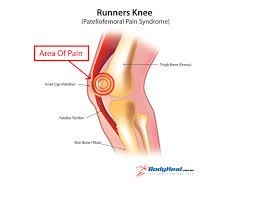

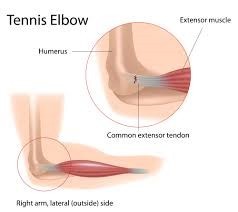

Tennis elbow (epicondylitis)
What it is: Repetitive use of the elbow — for example, during golf or tennis swings — can irritate or make tiny tears in the elbow’s tendons. Epicondylitis is most common in 30- to 60-year-olds and usually involves the outside of the elbow.
What you can do: Epicondylitis can usually be cleared up by staying off the tennis court or golf course until the pain improves.
Shoulder problems
What it is: Shoulder can come out of its socket or the tendons inside the shoulder can be torn.
What to do: You have to see your doctor at the earliest. It most probably will require surgery to correct the problem.
The PRICE principle for treating common sports injuries:
Using the PRICE method to treat any common sports injury will help get you back in the game sooner.
First, it’s important to know that swelling is a normal response to these injuries. Excessive swelling, though, can reduce the range of motion and interfere with healing. You can limit swelling and start healing faster after common sports injuries by using the PRICE principle:
- P — protect from further injury
For more severe injuries, protect the injured area with a splint, pad, or crutch. - R — restrict activity
Restricting activity will prevent worsening of the injury. - I — apply ice
Apply ice immediately after a common sports injury. Ice is the miracle drug for sports injuries. It’s an anti-inflammatory, without many side effects. Use ice for 20 minutes every one to two hours for the first 48 hours after the injury. Don’t use heat during this time — it encourages swelling and inflammation. - C —apply compression
Compression with an elastic bandage will help reduce swelling. - E —elevate the injured area
Elevating the injured area above the heart will also reduce swelling.
Over-the-counter pain relievers usually relieve the pain of common sports injuries to a tolerable level. If they don’t, it’s probably time to see a doctor.
When to get medical attention for common sports injuries
We know you’re tough but you also need to be smart. If you suspect a serious injury or if you have any of these signs, see a doctor:
- Deformities in the joint or bone it looks “crooked,” or moves abnormally
- You cannot bear weight or can’t use the limb without it “giving way”
- Excessive swelling
- Changes in skin color beyond mild bruising
- It’s not getting any better after a few days of PRICE therapy
